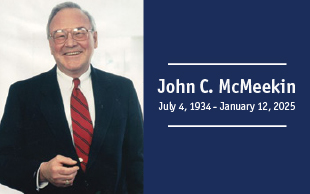CHDB Adds Cell Phone Sample to Survey
When it comes to health surveys, telephones are a researcher’s best friend and the Community Health Data Base’s biennial Southeastern Pennsylvania Household Health Survey of 10,000 households is no exception. Since the survey began in 1983, landline telephones have been the sole medium through which researchers asked Southeastern Pennsylvania residents critical questions that later informed programming for area health and social service agencies. However, in recent years, cell phones have replaced landline phones as the primary means of communication for some families. Experts estimate that one out of every five households in the U.S. (20.2%) is reachable only by cell phone.* These households represent a vital, but often neglected, part of traditional telephone surveys. As a pioneer in health research, CHDB included 300 cell phone interviews in its 2008 survey, providing one of the first looks into the differences between traditional survey respondents and this underrepresented group.
A Look at Philadelphia’s Cell Phone Users
The 2008 Survey tested five groups of phone users in Philadelphia: cell phone only, cell phone mainly, landline mainly, landline/cell phone equally and landline only. Of the 300 survey respondents reached on cell phones, 40% were cell phone only households, 36% described themselves as mainly using a cell phone, 2% stated they used both cell phones and landlines equally and 16% reported using their landline primarily.
CHDB researchers found that, generally, the demographics of Philadelphia’s cell phone only users parallel national statistics on cell phone only users. Overall, cell phone only users tend to be younger and are more likely than others to be males,to be racial or ethnic minorities and to live in poverty.
The survey found that about 72% of cell phone users were ages 18-39. Additionally, of the cell phone only respondents, 59% were male. The survey revealed that in Philadelphia Latinos are disproportionately represented among cell phone only users, relative to their representation in the overall population. The survey also showed that almost 26% of cell phone only respondents lived below the Federal Poverty Level.
CHDB’s research discovered that cell phone only users were more likely than other respondents to face some barriers to health care. Cell phone only respondents are more than twice as likely (30%) to be uninsured than any other type of phone user. Similarly, 30% of cell phone only users do not have a regular source of healthcare, and a quarter (26%) have not received medical care due to cost in the past year.
Preparing for the Future
Although the inclusion of cell phone only households in survey research has grown rapidly in recent years, CHDB is among a few select survey initiatives to include a cell phone sample as part of its target population. Surveying harder-to-reach respondents on cell phones is just one of the many ways that CHDB is preparing for the changing landscape of health research.
For more information about the Community Health Data Base or cell phone sampling, please contact Rose Malinowski Weingartner at This email address is being protected from spambots. You need JavaScript enabled to view it. or 215.985.2572.
Data in Action
“At Planned Parenthood Southeastern PA, we use CHDB data to identify opportunities and gaps in service. If a health center has a large population of women in their forties and fifties living nearby, it is a cue to highlight our midlife services in that community’s outreach and marketing activities. When it is time to add or relocate a site, information on current health behaviors helps us identify communities with insufficient reproductive health care resources. By combining information from the household survey with Census data, CHDB is a valuable tool to help us understand the areas we serve from a variety of perspectives, which in turn helps us better serve those communities.”
Ilene Appel Marker
Director, Business Development
Planned Parenthood Southeastern PA





